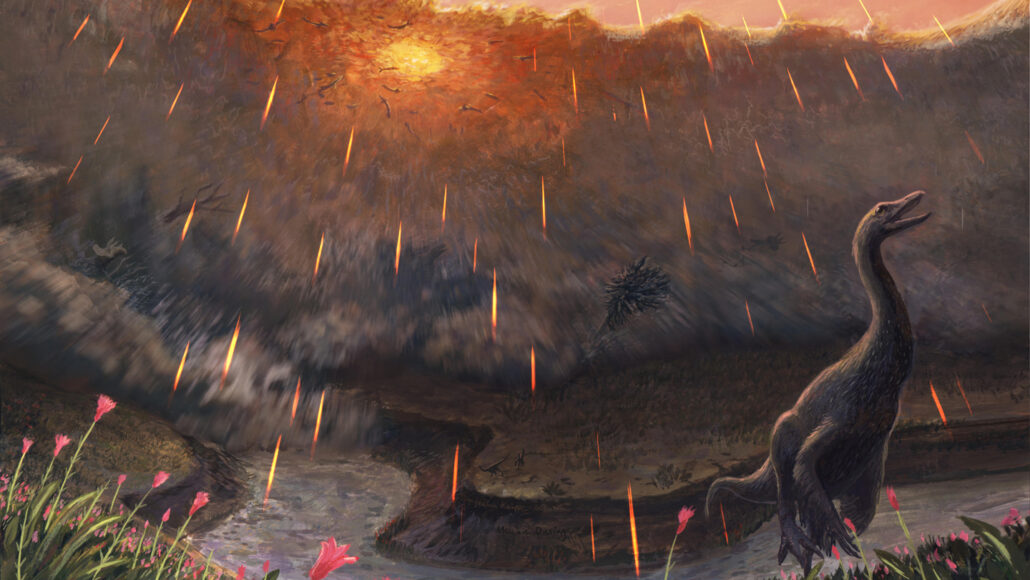Questions for ‘The end of the dinosaurs appears to have come in springtime’

The Chicxulub asteroid impact off the coast of Mexico occurred about 66 million years ago. It triggered devastating flooding at a site in North Dakota (illustrated). This dino-killing impact took place in spring, data now suggest.
Joschua Knüppe